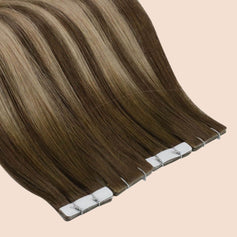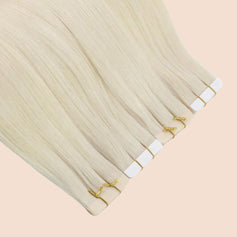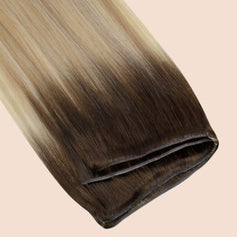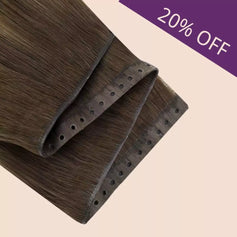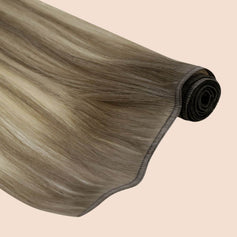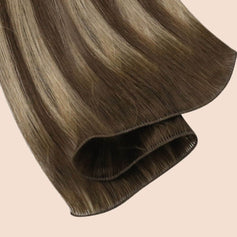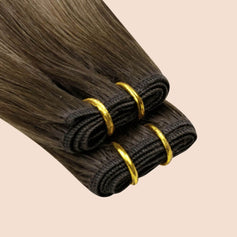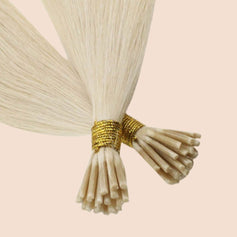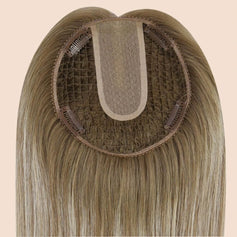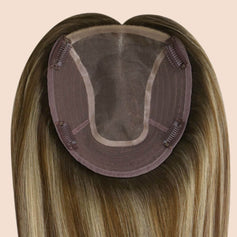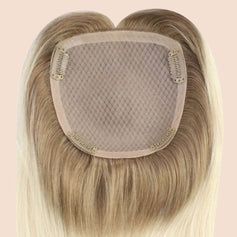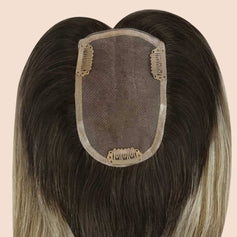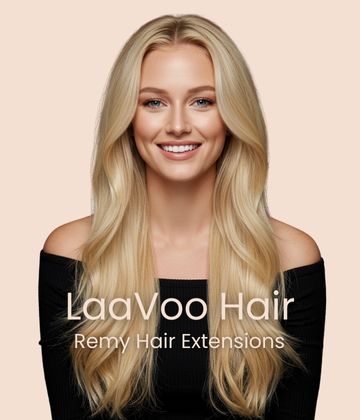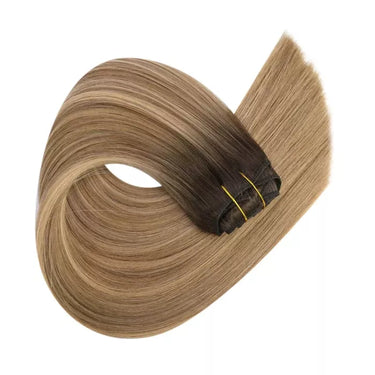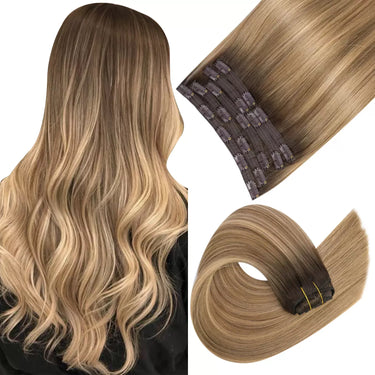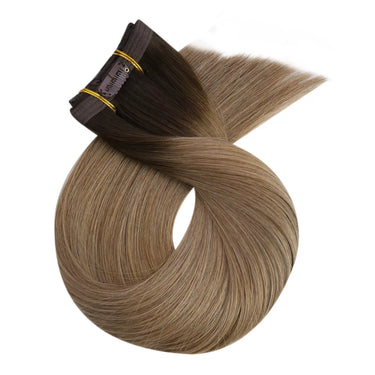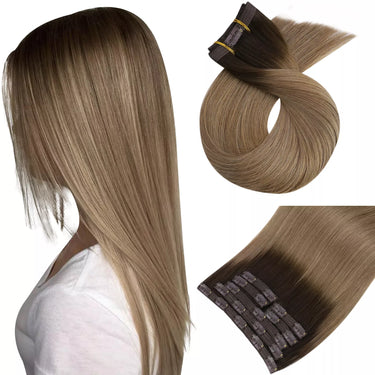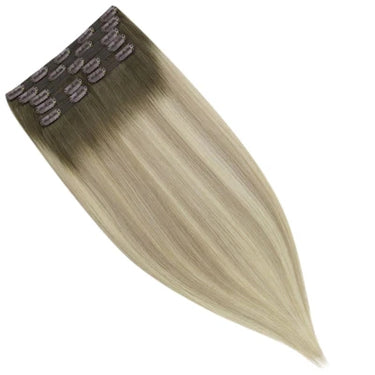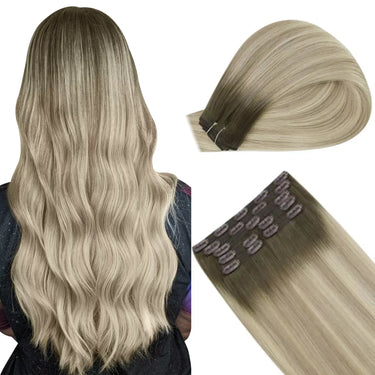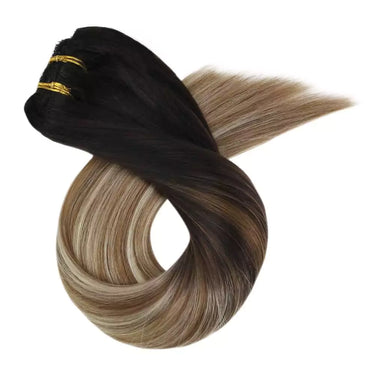
Your super long hair looks great flowing in the summer breeze. And we’ve seen kols make beach waves or mermaid waves lately with their extra long wavy hair in terms of artistic modeling even their weddings!


But, how do we get extra long & wavy celebrity hair? Of course by choosing hair extensions! And which material should we choose?
We've seen many common types of hair extensions in this blog -What are the different types of hair extensions?
It mentioned about the artificial chemical fiber and human hair. Some of us may still not know these two things very well. Let’s take a look of their difference~
First of all, the materials of hair extensions can be basically classified into two : man-made fibers and human hair.
The hair extensions on the market are basically processed and produced with them.
1. Synthetic fiber:
It is the chemical fiber filament collectively referred to in the hair extensions industry. It refers to the chemical fiber material synthesized by the chemical "drawing" or "blowing" process. Similar to the hair extensions of human hair. The famous ones are kanekalon and toyokalon in Japan. They are used most in early years.
Synthetic filaments mainly include: normal temperature filaments, high temperature filaments, protein filaments, etc. What’s more,they can also be divided into ordinary filaments and matte filaments according to their reflectivity.
Normal temperature silk:
It is generally used as a filling material in human hair products, which can effectively reduce the cost of human hair products. But the disadvantages are also relatively obvious: easy to deform, difficult to take care of, not resistant to high temperatures, and flammable items. They are basically single-use products, so they have been gradually phased out in recent years.
High temperature wire:
Compared with normal temperature wire, high temperature wire has a great improvement in high temperature resistance. Theoretically, it can bare 160 °C and will not deform (according to different production processes, the resistance temperature is between 100℃~160℃). Under proper temperature, it can be pulled hot, easy to maintain and save, more realistic.
Protein silk:
With the development of the hair extensions industry, customers have higher requirements for products, and low-end products can no longer meet their needs, so there comes a higher quality raw material - protein silk. Compared with normal temperature silk and high temperature silk, protein silk has achieved a further level of fidelity. It is a raw material with the feel and fidelity closest to human hair so far. It is often used in the production of high-end hair extensions. So the price will be higher than the first two.
2. Human hair:
According to different regions, human hair can be mainly divided into: Chinese hair, Indian hair, Brazilian hair, Myanmar hair, Vietnamese hair, Mongol hair and so on. Because of its material, it can be permed and dyed, and it is easy to preserve, but the production of human hair is limited, and the price of human hair products is slightly more expensive.
The main difference between human hair in various regions lies in the hair quality and curvature. Brazilian hair and Indian hair are softer in hair quality and slightly larger in curvature. They are suitable for European and American hairstyles and are mostly used for hair extensions. Among them, Brazilian hair is the most popular.
Chinese hair, Mongolian hair, Burmese hair, and Vietnamese hair are all Asian hair types, with thicker and straighter hair. Among them, Chinese hair is smooth and the price is the most expensive, and Chinese hair is the best.
So get your extra long & wavy celebrity hair in Laavoo!!!
We produce all 100% human hair from China, and our products are of super high quality, to have thicker hair with longer hair length, choose us to enjoy your beautiful summer!

